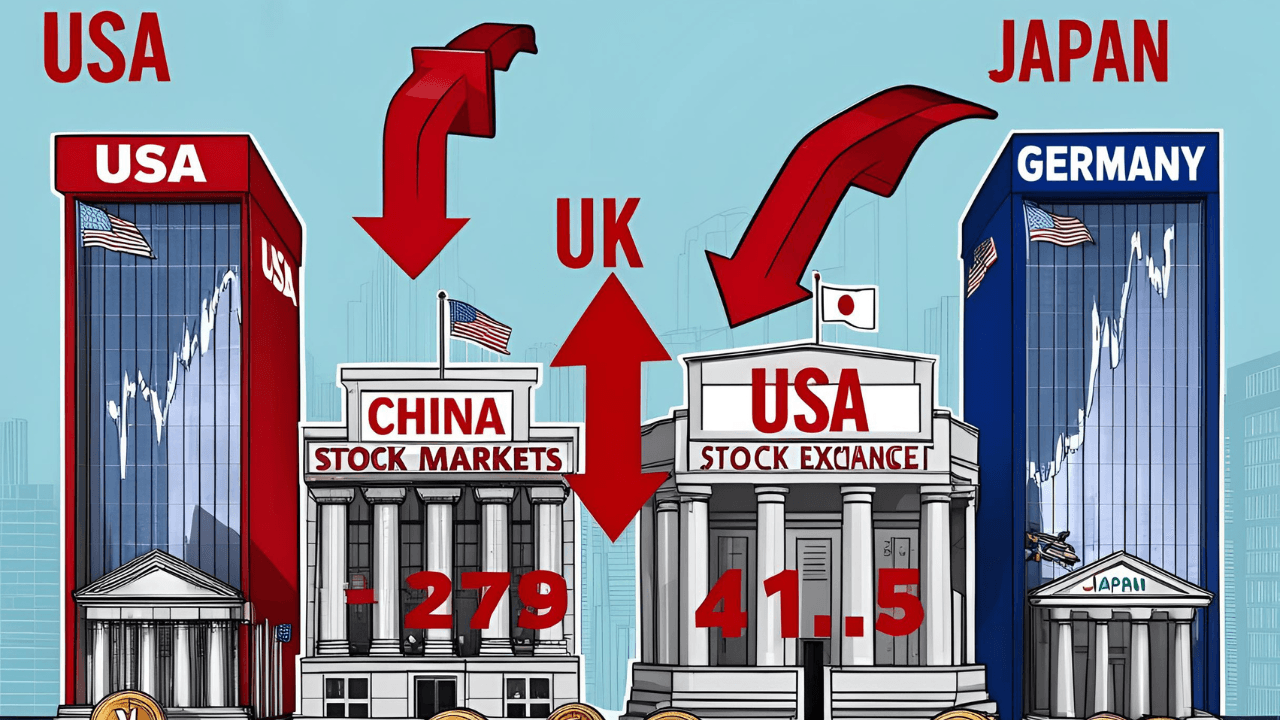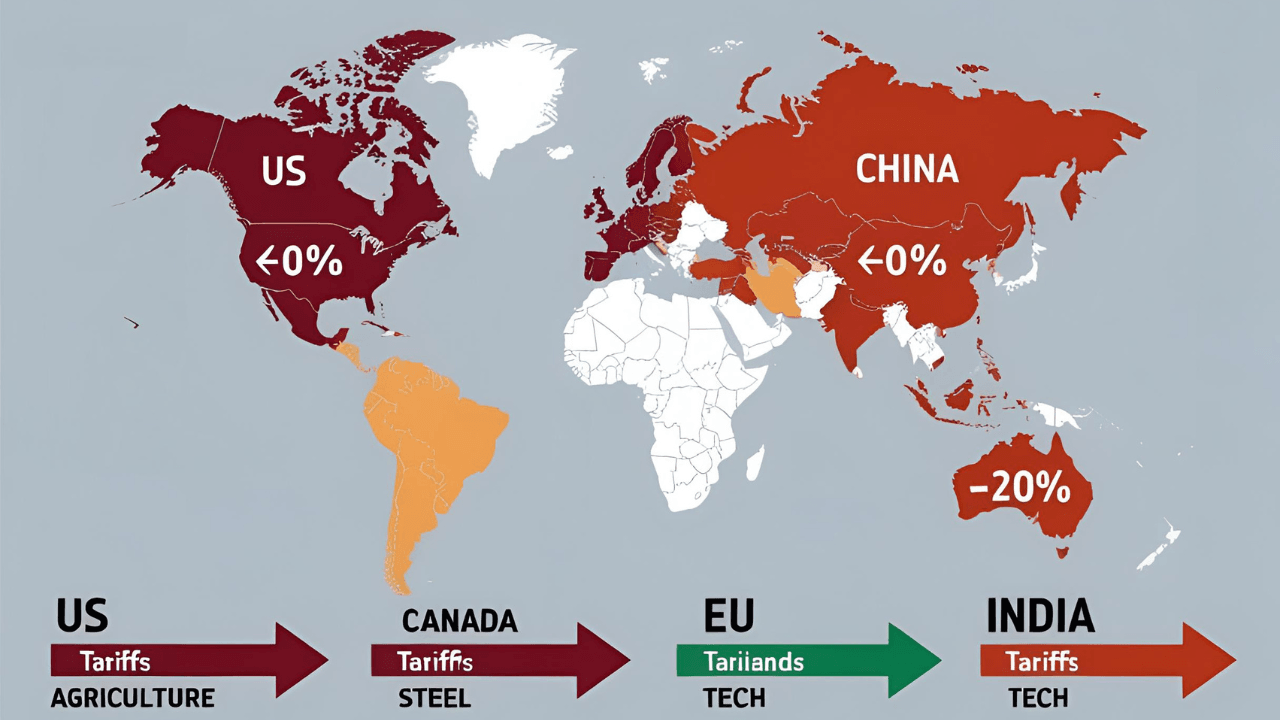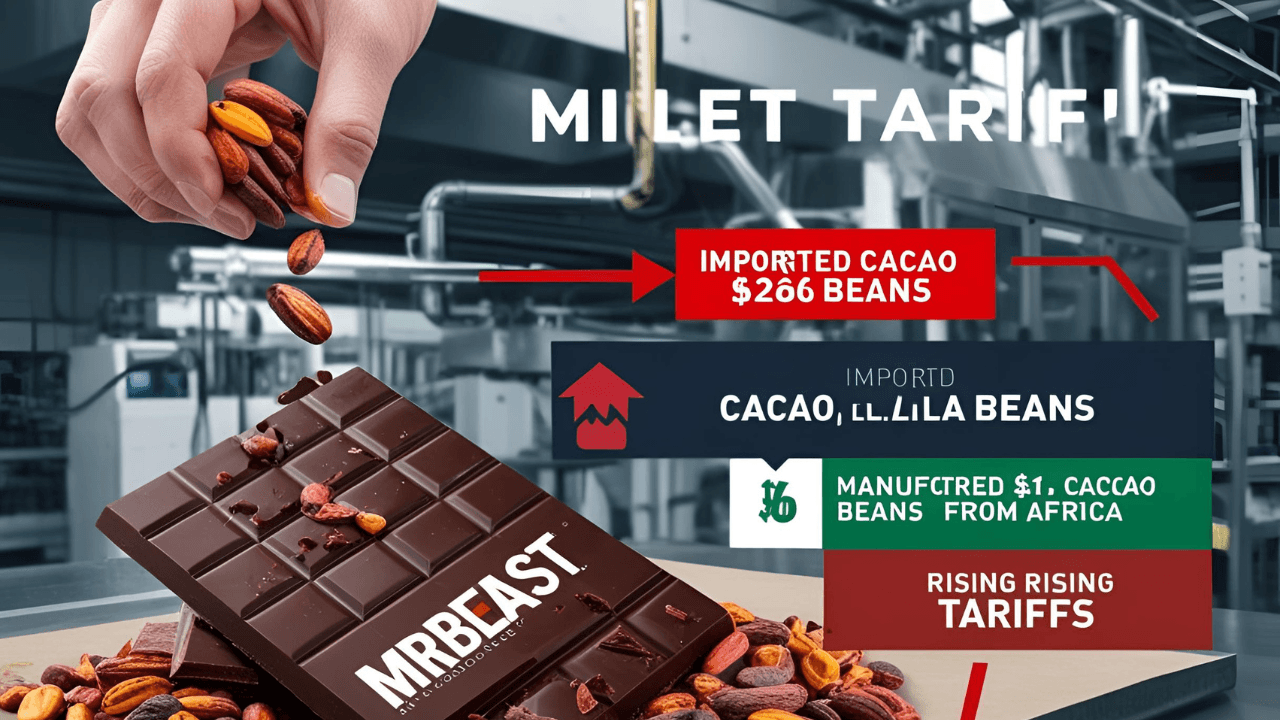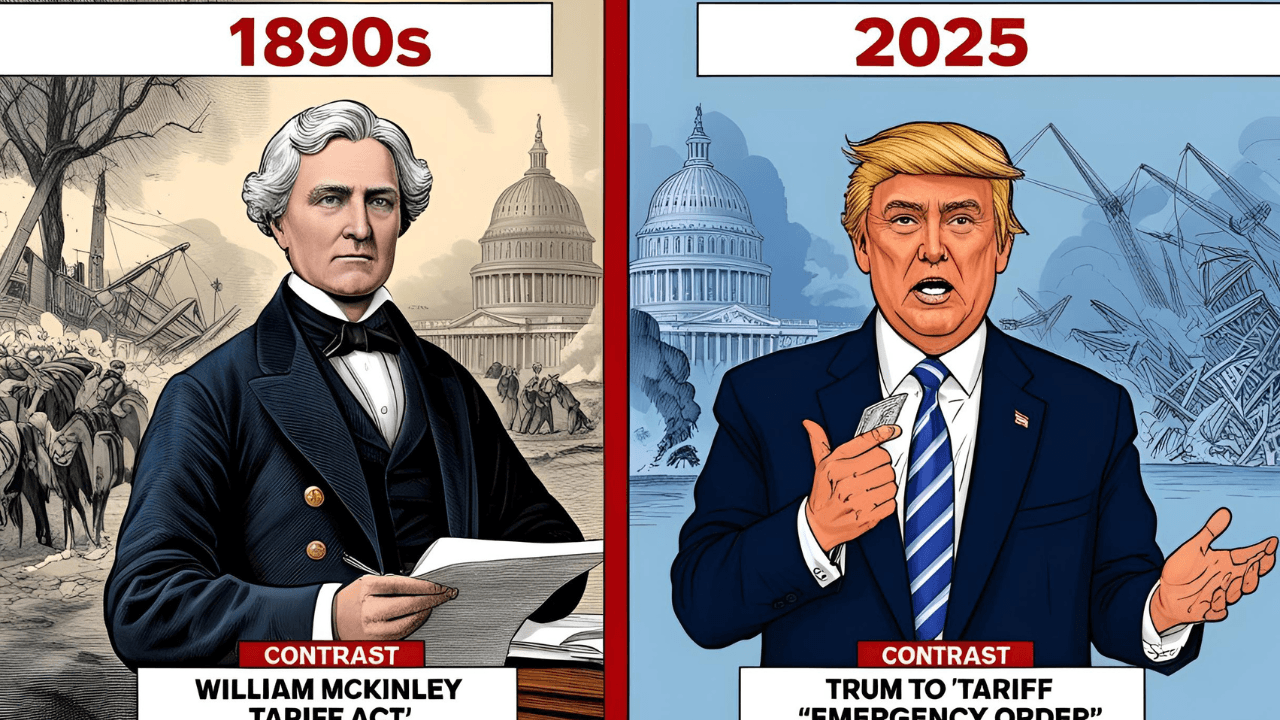We live in a world where one foolish politician can spell devastation on a global scale—and unfortunately, we are witnessing this unfold right before our eyes. On April 2, 2025, former U.S. President Donald Trump announced a new wave of sweeping tariffs on more than 90 countries. In his dramatic style, he proclaimed, “No more! Many countries have ripped us off left and right.” According to him, the world has long looted America, the wealthiest nation on the planet, and now, it was America’s turn to do the ripping. Within days, global stock markets went into a tailspin. Trillions of dollars were wiped out within a week, and the specter of a global recession loomed large. Monday, April 7, proved to be catastrophic for stock exchanges around the world—whether in Hong Kong, Taiwan, China, Japan, Germany, the UK, the US, or India—everywhere saw a dramatic fall in share prices.
The Start of a Global Trade War

The recklessness of Trump’s policy was evident from the very beginning. On April 2, he imposed a 34% tariff on Chinese imports. China, unsurprisingly, responded within two days with a mirror 34% tariff on American goods. Rather than negotiating, Trump retaliated further, threatening an additional 50% tariff if China didn’t back down. By April 9, both sides had escalated tariffs to 84%, and the tit-for-tat game continued. This wasn’t a trade policy—it was a trade war. And one that was visible to the entire world. This chaotic, schoolyard-like approach to global economics left markets trembling and allies confused.
What Are Tariffs and Why Are They Imposed?
Before we delve deeper, let’s clarify the basics. A tariff is essentially a tax imposed on goods imported from another country. For instance, if you purchase an iPhone in India, you’re likely paying a 15% import tax levied by the Indian government. Similarly, clothes might attract an import duty of 20–25%. There are two main reasons for imposing tariffs: to generate government revenue and to protect domestic industries. By making imported goods more expensive, local products appear more affordable, giving domestic industries a competitive edge. Many countries employ tariffs wisely to protect critical sectors—South Korea in the 1980s and 1990s is a great example. By strategically applying tariffs on rice, they supported struggling farmers until they could modernize and compete globally.
When Tariffs Become Weapons

However, tariffs can also become tools of economic warfare. Suppose India exports large quantities of medicine to South Korea, and one day South Korea imposes a 100% tariff to protect its domestic pharmaceutical industry. This sudden move could devastate India’s pharmaceutical exporters. That’s how trade wars begin—when countries impose tariffs without negotiation, forcing the affected country to retaliate. This cycle of retaliation causes harm on both sides. The smart way forward is diplomacy and negotiation, allowing both sides to reach an agreement that protects their domestic interests without upending trade relations.
Trump’s Disruptive Tariff Strategy
Instead of diplomacy, Trump took an autocratic approach. Without consulting other nations or even internal stakeholders, he slapped tariffs across the board—ten percent or more on virtually all foreign goods. He claimed this was necessary to reduce America’s trade deficit and even dubbed the day of announcement “Liberation Day.” However, trade deficits are not inherently negative. For instance, if a country has a strong economy, plenty of foreign investment, and no critical dependencies, running a trade deficit might not be a bad thing. But Trump used his emergency powers to declare trade deficits a national emergency—an unprecedented and controversial move in a democratic setup.
Arbitrary Tariff Calculations and Uninhabited Islands

Trump’s method of determining tariff percentages was bizarre. He took a country’s trade deficit with the U.S., divided it by total imports from that country, and then applied half that percentage as the tariff rate. Not only was this economically illogical, but it also led to absurd scenarios—such as imposing tariffs on Heard Island and McDonald Island, uninhabited territories near Antarctica populated only by penguins. This decision raises the question—was this even properly reviewed, or did Trump just misinterpret the name “McDonald Island” as some burger-themed Disneyland?
Global Retaliation Hits Trump’s Base
Naturally, countries didn’t take these measures lightly. Retaliatory tariffs were imposed strategically, targeting U.S. states and industries that supported Trump. China focused on corn farmers and car manufacturers. Canada targeted poultry farms and AC producers. The EU aimed at steel mills and slaughterhouses. The idea was to create political pressure by hurting Trump’s voter base. While these countries were hit by American tariffs, they ensured their countermeasures hit back where it would be felt most—at the heart of Trump’s domestic support.
The Real Victim: The American Consumer

The ultimate burden of these policies falls not on governments, but on everyday people. In today’s interconnected, globalized economy, even products manufactured in the U.S. depend on foreign raw materials. Take MrBeast’s chocolates, for example. Though manufactured in the U.S., the cacao beans are imported from Africa. With tariffs raising the cost of these raw materials, the entire product becomes more expensive. Consumers suffer, businesses lose competitiveness, and companies consider shifting manufacturing abroad—exactly the opposite of what Trump claimed to promote.
Lessons from History: Tariffs and Economic Collapse
America has tried protectionist tariffs before—with disastrous results. In 1890, President William McKinley imposed steep tariffs, earning the nickname “Napoleon of Protectionism.” This led to the depression of 1893, with unemployment skyrocketing to 25%. The Smoot-Hawley Tariff Act of 1930, passed under President Hoover, led to global trade dropping by 66% and intensified the Great Depression. Historically, it’s been clear that tariffs, if used recklessly, do far more harm than good.
Undermining Global Trade Institutions
After WWII, the U.S. led the charge in establishing free trade norms, culminating in the formation of the World Trade Organization (WTO), which aimed to reduce global tariffs and promote economic cooperation. The U.S. was its staunchest advocate—until now. Under Trump, America began dismantling the very systems it helped create. With his unpredictable moves, he created uncertainty that discouraged international investment and cooperation. As the Singaporean Prime Minister warned, such trade wars have historically escalated into armed conflicts. If international cooperation continues to decline, the world could find itself slipping toward dangerous geopolitical confrontations.
A Confused Strategy That Hurts Everyone
On April 9, Trump suddenly announced a 90-day pause on tariffs for countries that hadn’t retaliated—but kept increasing tariffs on China. This roller-coaster policy—without consistency or rationale—left world markets jittery and business leaders confused. It seems not even Trump himself fully understands what he wants to achieve. And in a global economy so interconnected and fragile, this kind of recklessness doesn’t just hurt one country—it endangers all.

Pingback: EARN MONEY WHILE YOU SLEEP - 5 Passive Income Ideas For 2025
Pingback: BRICS Currency vs US Dollar: India's Role & Global Impact